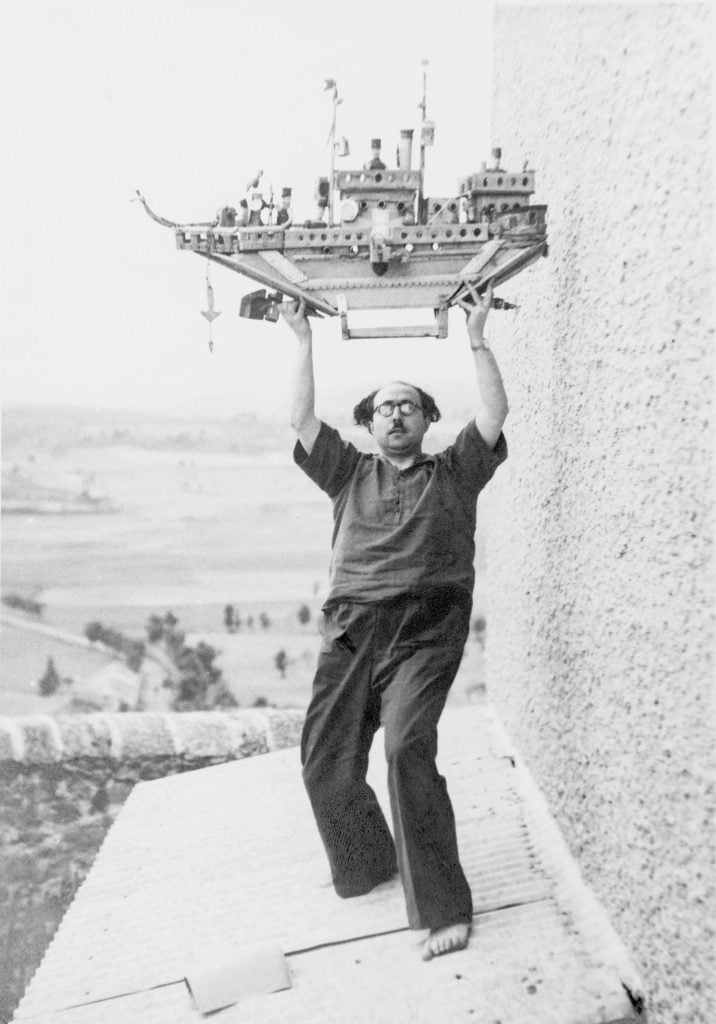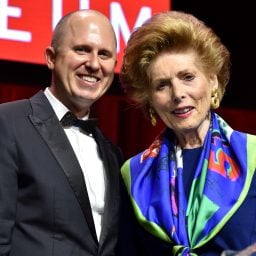The term art brut—meaning “raw art”—was first coined by French artist Jean Dubuffet in the 1940s, broadly referring to art created by those entirely outside the art world’s sphere of influence. The inspiration behind Dubuffet’s term, however, has largely been overlooked—but can be traced to one of the most fascinating moments in art history when geopolitics, art, and psychiatry converged.
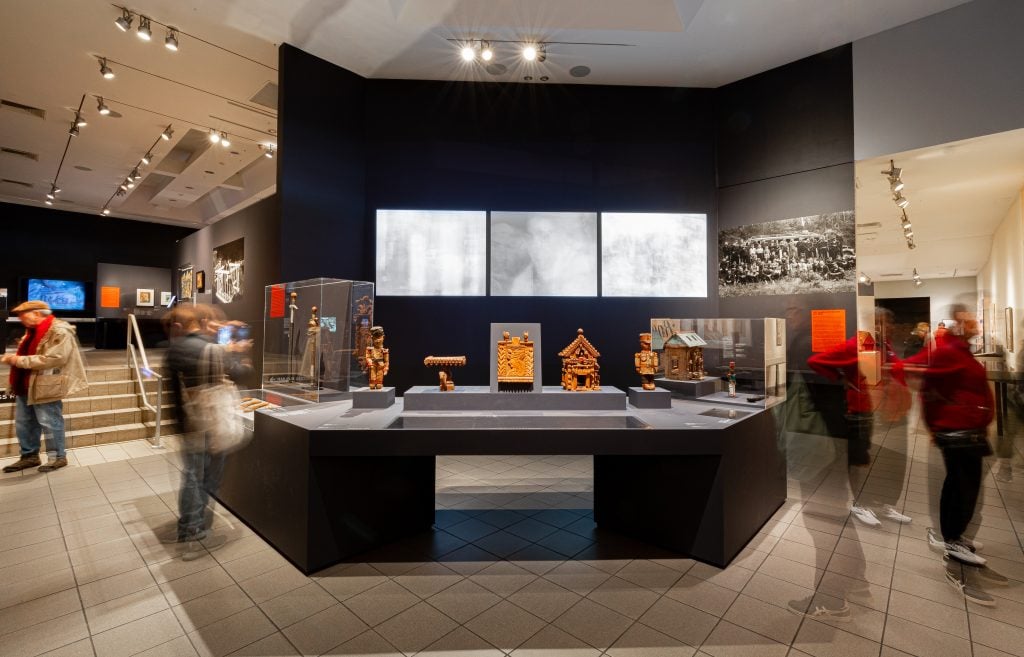
Installation view of “Francesc Tosquelles: Avant-Garde Psychiatry and the Birth of Art Brut” (2024). Photo: Eva Cruz, Every Story. Courtesy of the American Folk Art Museum, New York.
This specific moment is the subject of “Francesc Tosquelles: Avant-Garde Psychiatry and the Birth of Art Brut,” presently hosted by the American Folk Art Museum (AFAM) in New York, the traveling exhibition’s only stop in the United States, on view through August 18, 2024. Co-organized by the Centre de Cultura Contemporània de Barcelona, the show centers on the psychiatric hospital in Saint-Alban-sur-Limagnole in France, which was helmed by the Catalan psychiatrist Francesc Tosquelles beginning in 1940.
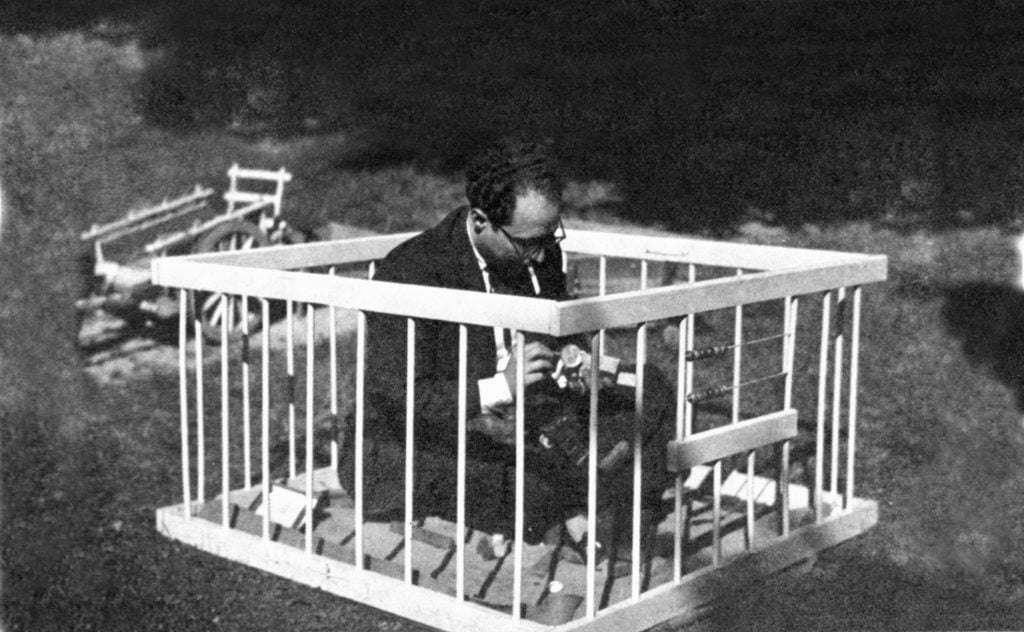
Jacques Matarasso, Francesc Tosquelles in the Garden of the Saint-Alban Psychaitric Hospital (ca. 1944–45). Collection of the Family Ou-Rabah Tosquelles.
Tosquelles, the proverbial heart of the exhibition, fled Franco’s regime and came to Saint-Alban Psychiatric Hospital at a moment of institutional crisis. Under the yoke of the French Vichy government and Nazi German occupation, elemental provisions for the country’s psychiatric populace were all but eliminated. The hospital had some 852 patients at the time and Tosquelles radically transformed the organization by implementing what would come to be known as “institutional psychotherapy,” an approach to psychiatric care that involved eliminating hierarchy and dissolving the boundaries between patients, doctors, and facility workers as well as with the local community and other outsiders—many of whom were seeking refuge from rising dissident persecution. Among the outsiders who spent time at Saint-Alban was Dubuffet himself.
“One of the issues that confronted us from the moment we started preparing this exhibition was a very unsatisfactory history of ‘art brut,’ mostly shaped by Jean Dubuffet, but generally misunderstood in its initial conceptualization,” said Valérie Rousseau, AFAM senior curator of self-taught art and art brut, one of the shows several curators. “We wanted to shed some light on its genealogy, the artist-patients of Saint-Alban associated with the term, and the underlying tensions at the core of their artistic recognition.”
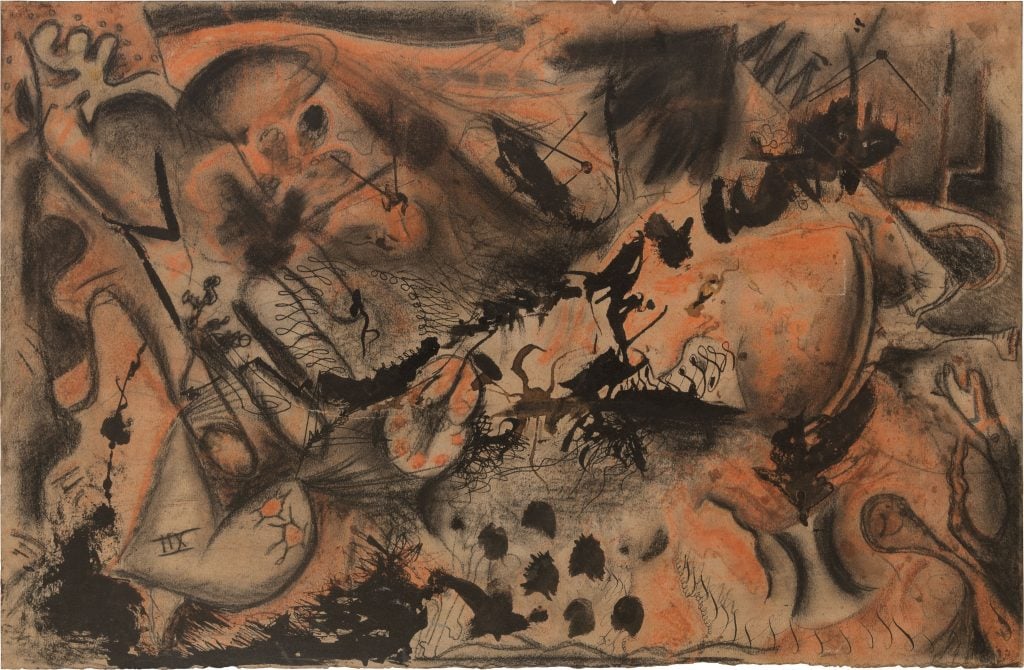
Jeanne Bonnafé, Lucien Bonnafé, Frédéric Delanglade, Gaston Ferdière, Hélène Tosquelles, and Francesc Tosquelles, Cadavre Exquis (Exquisite Corpse) (January 1, 1943). Collection of Family Ou-Rabah Tosquelles.
Embedded in Tosquelles’s avant-garde approach to psychiatric treatment was incorporating patients into the hospital’s day-to-day activities, including maintaining the facility as well as having a space where celebrations, plays, and dances could be held and access to a library, cinema—and artmaking workshops.
The exhibition presents a dynamic range of works created by Saint-Alban’s residents, though it is interesting to note that throughout the show’s texts, these patients are not specifically referred to as “artists,” but rather individuals who created art or artist-patients. Within the context, this speaks to the malleability of art, autonomy, as well as the obscurity—and vulnerability—of the people who created work there. Adding to the exhibition’s rich reflection on life at Saint-Albans in the 1940s, the show includes nearly as many documentary photos, films, and ephemera as artworks, bringing the milieu to life.
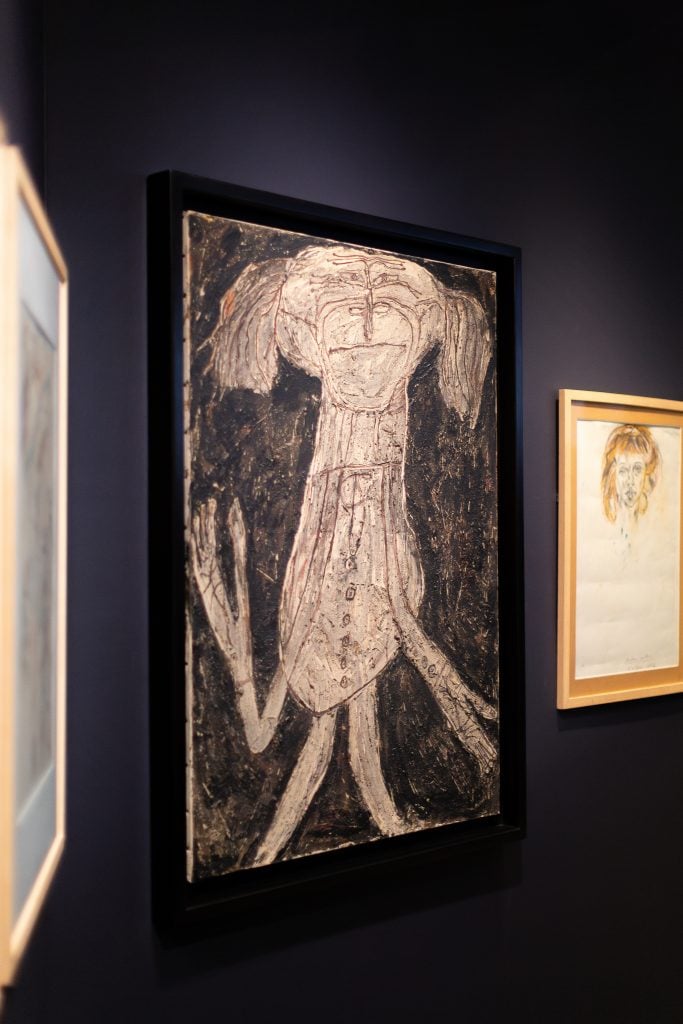
Installation view of “Francesc Tosquelles: Avant-Garde Psychiatry and the Birth of Art Brut” (2024); center work: Jean Dubuffet, Antonin Artaud aux Houppes (1947). Neumann Family Collection, New York. Photo: Eva Cruz, Every Story. Courtesy of the American Folk Art Museum, New York.
“The exhibition offers an alternative narrative to consider this material and the agency of the makers, by getting closer to the actual living conditions and realities on the premises of this hospital,” said Rousseau.
Here, against the backdrop of World War II, Saint-Alban became a haven not only for its patients but for artists, intellectuals, and other members of the artistic avant-garde considered dissidents during the occupation. Dubuffet, however, initially went to Saint-Alban in 1945 in search of work by one of its residents, Auguste Forestier, whose work he had encountered in Paris.
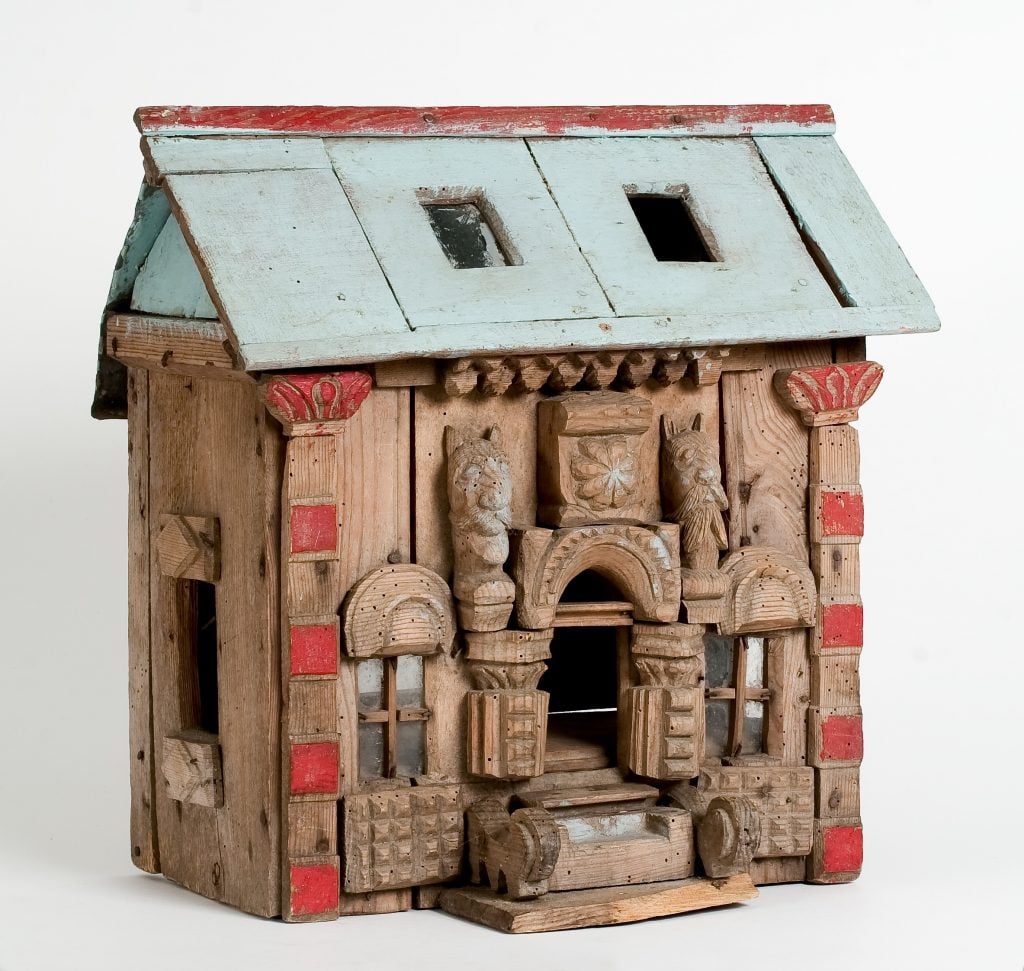
Auguste Forestier, Untitled (House with Two Carved Heads) (n.d.). Collection of Lille Métropole Musée d’art moderne, d’art contemporain et d’art brut, Villeneuve d’Ascq.
Forestier’s work is a standout in the show, with a large number of his pieces on view. A long-term resident of Saint-Albans, over the course of his time there his creative practice underwent a trajectory that could be paralleled by that of a formally trained artist. Beginning with drawing, by the mid-1930s he was carving wooden toys, which ultimately became larger scale and more complex. A suite of wooden soldiers, a carved house, and a pair of swords crafted from found materials speak to the breadth of Forestier’s creative imagination.
Elsewhere, meticulously executed embroideries and a completed wedding dress made entirely of unraveled bedsheets by Marguerite Sirvins, who developed signs of schizophrenia in her 40s, hold incredible amounts of detail. Alongside work by artist-patients such as Benjamin Arneval and Aimable Jayet, the works on view illustrate the artistic community that ultimately inspired Dubuffet to expand upon and champion art brut.
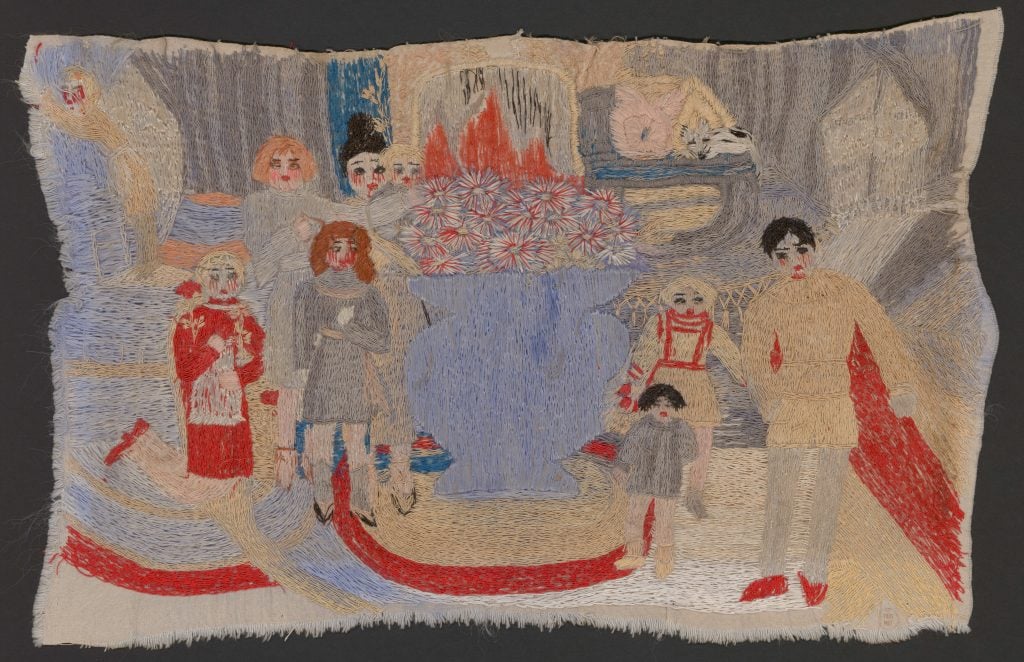
Marguerite Sirvins, Untitled (Large Blue Vase and Figures) (1944–57). Collection de l’Art Brut, Lausanne.
To Dubuffet, Forestier and his work evidenced his belief that not only did the art world disregard work made by people like Forestier but that it was of utmost importance that such work (made by people “uncontaminated by artistic culture” as he saw it) be formally collected and preserved.
Dubuffett’s and Tosquelles’s motivations were understandably disparate, where the former hailed from deep within the art world and was preoccupied with broadening the art historical canon, the latter was focused on treating patients and changing institutional practices. Rousseau explained, “As a medical practitioner, Tosquelles initially greeted Dubuffet’s collecting initiatives with skepticism, seeing him as an aesthete looking to commodify works that emerged as by-products of patients’ psychiatric treatment,” continuing, “Institutional psychotherapy at Saint-Alban sought to rehabilitate patients by bringing them back into various forms of labor and social exchange. Tosquelles had no interest in the countercultural sensibilities of Dubuffet’s art brut. Meanwhile, Dubuffet despised the notion of ‘psychopathological art’ developed at the time, opposing the seclusion of these individuals on the basis of a false dichotomy between normality and deviance.”
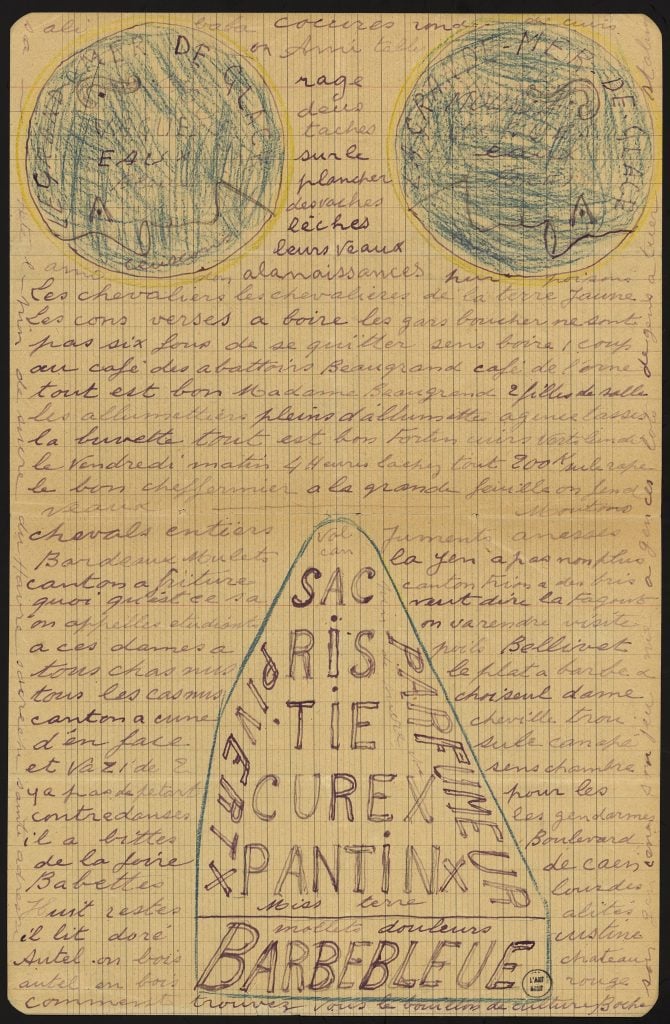
Aimable Jayet, Illustrated Text of Four Profiles (double-sided) (1949). Collection de l’Art Brut, Lausanne.
Today art brut and outsider art are largely used interchangeably, but there is a degree of nuance that differentiates the two. As Christian Berst whose eponymous gallery specializes in art brut once observed, “The sun is art brut: the art of otherness, of individual mythologies outside the usual art circuits. Outsider art is the solar system, which contains the sun, but covers many other categories, folk art, intuitive art, visionary art, self-taught, etc.” Within the context of Saint-Alban and the creations of its artist-patients, the distinction bears greater importance and signifies creators and creations that otherwise might be lost to the annals of history.
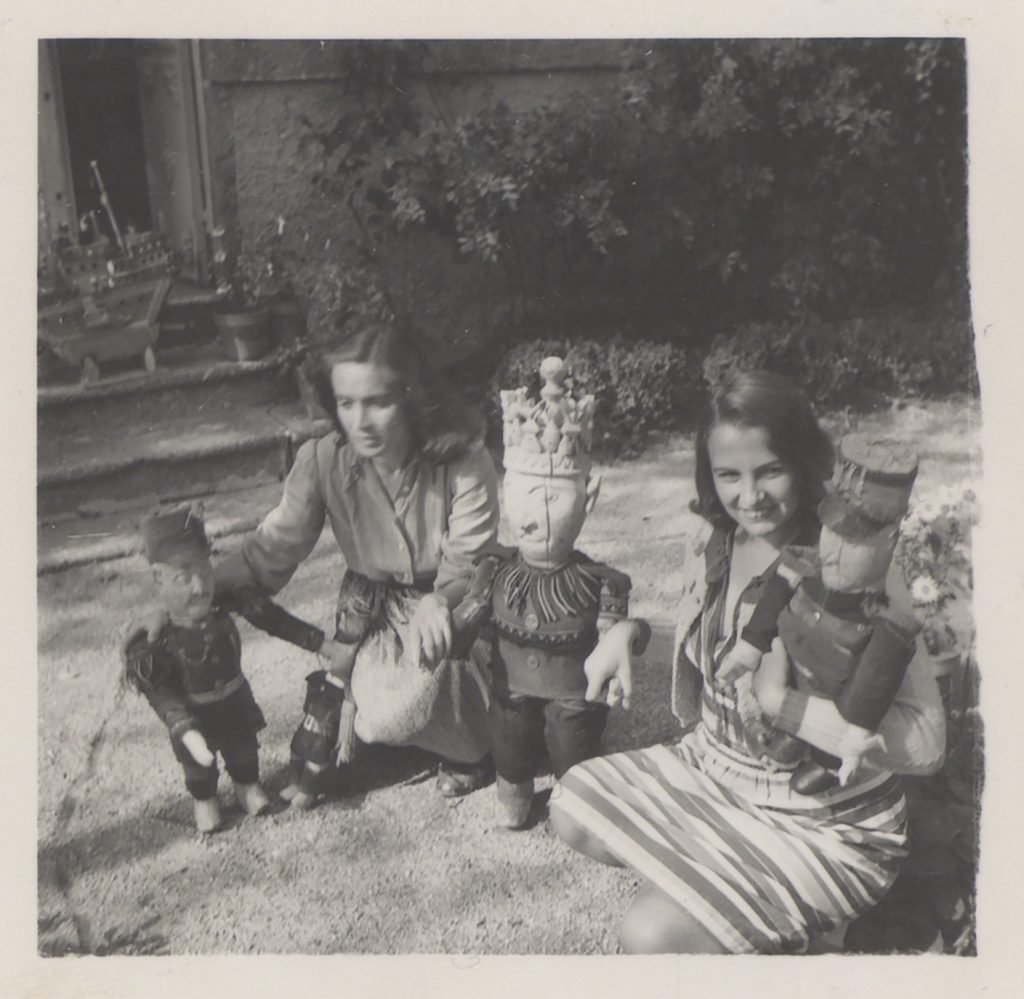
Succession Gérard Vulliamy, Jeanne Bonnafé and Cécile Eluard in Saint-Alban, with Sculptures by Auguste Forestier, Including a Boat on the Steps Behind Them (ca. 1945). Courtesy of the American Folk Art Museum, New York.
“Activated in the exhibition by accompanying film footage, firsthand recollections, and handwritten letters (notably by Antonin Artaud and Marguerite Sirvins describing brutal starvation and conflictual situations), these artworks evoke a very vivid experience of life and material conditions within the hospital and its surrounding community,” said Rousseau. “After having researched and debated the status of such objects for so long, we found ourselves drawn in by their tactile qualities and feeling of proximity to the artists. We could sense how these works concealed complex realities. At times, we were also unsettled by the fragility and precariousness of this material culture, and grateful to those who preserved it and facilitated these exceptional loans to the exhibition.”
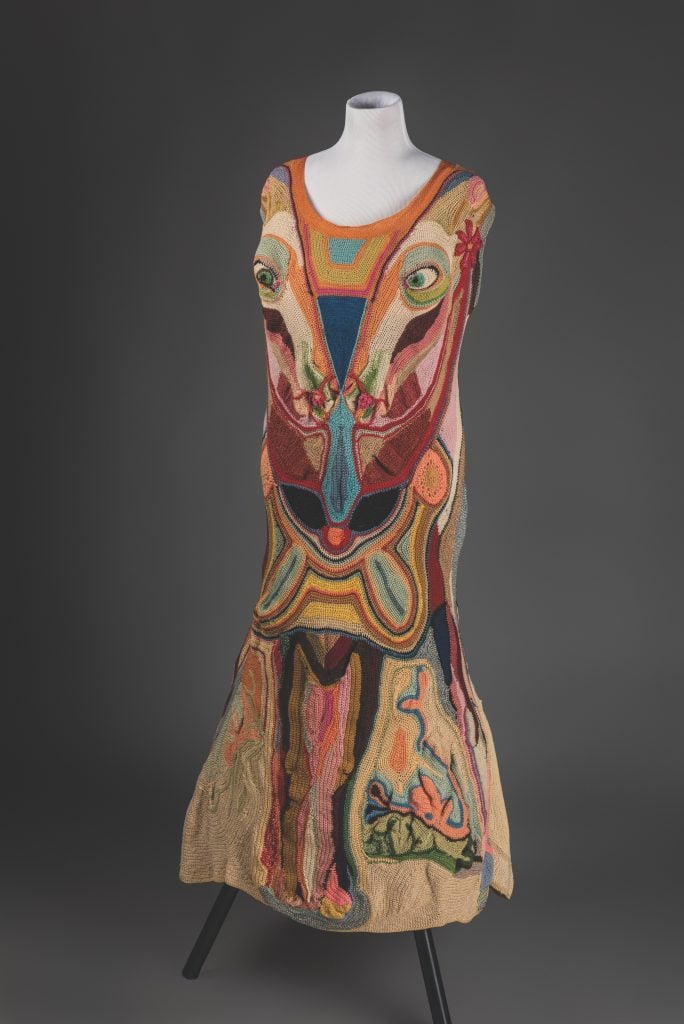
Artist unidentified (active early 20th century, United States), Untitled (Known as “Horse Dress”) (ca. 1935–1940). Collection of American Visionary Art Museum, Baltimore, courtesy of the Sheppard and Enoch Pratt Hospital.
The story of art brut is still ongoing, and this continuing legacy is explored in the second half of the exhibition which includes a selection of post-war works from abroad as well as sections dedicated to examining the treatment of mental health in the post-war period and beyond, including in the United States. At the core of Tosquelles’s philosophy was the belief that mental illness, as Rousseau describes, was “not an individual pathology but rather a social form of alienation,” and there was a “necessity of ‘curing’ institutions themselves.” The trajectory of psychiatric care in the United States throughout the 20th century to today has seen a similar push and pull between community organizations and traditional asylums, or as Rousseau put it, “clashing utopian and anti-utopian tendencies, the former sharing strong affinities with Tosquelles’s vision of an ‘asylum-village.’”
While “Francesc Tosquelles: Avant-Garde Psychiatry and the Birth of Art Brut” presents an incredible array of art made during the singular period at Saint-Alban Psychiatric Hospital, the emphasis is equitably distributed to events and contexts beyond that of just art making. The result is a powerful testament to the fact that no subject or sphere—whether it be art, the art world, psychiatry, culture, or medicine—operates in a vacuum, but is instead intimately woven into the fabric of a lived experience shared by all.
The AFAM version of the show is co-curated by Valérie Rousseau, PhD, Curatorial Chair for Exhibitions and Senior Curator of Self-Taught Art and Art Brut; Joana Masó, PhD, Researcher at UNESCO chair for Women–Development and Cultures and at ADHUC–Research Centre for Theory–Gender and Sexuality, and Senior lecturer at Barcelona University; Carles Guerra, PhD, Inaugural Visiting Professor in Catalan Studies, New York University; curator and researcher, former Chief Curator at the Museu d’Art Contemporani de Barcelona and former Executive Director of the Fundació Antoni Tàpies; and Edward Dioguardi, AFAM’s Anthony Petullo Foundation and Weiler Curatorial Fellow, PhD Candidate in Comparative Literature, New York University.
